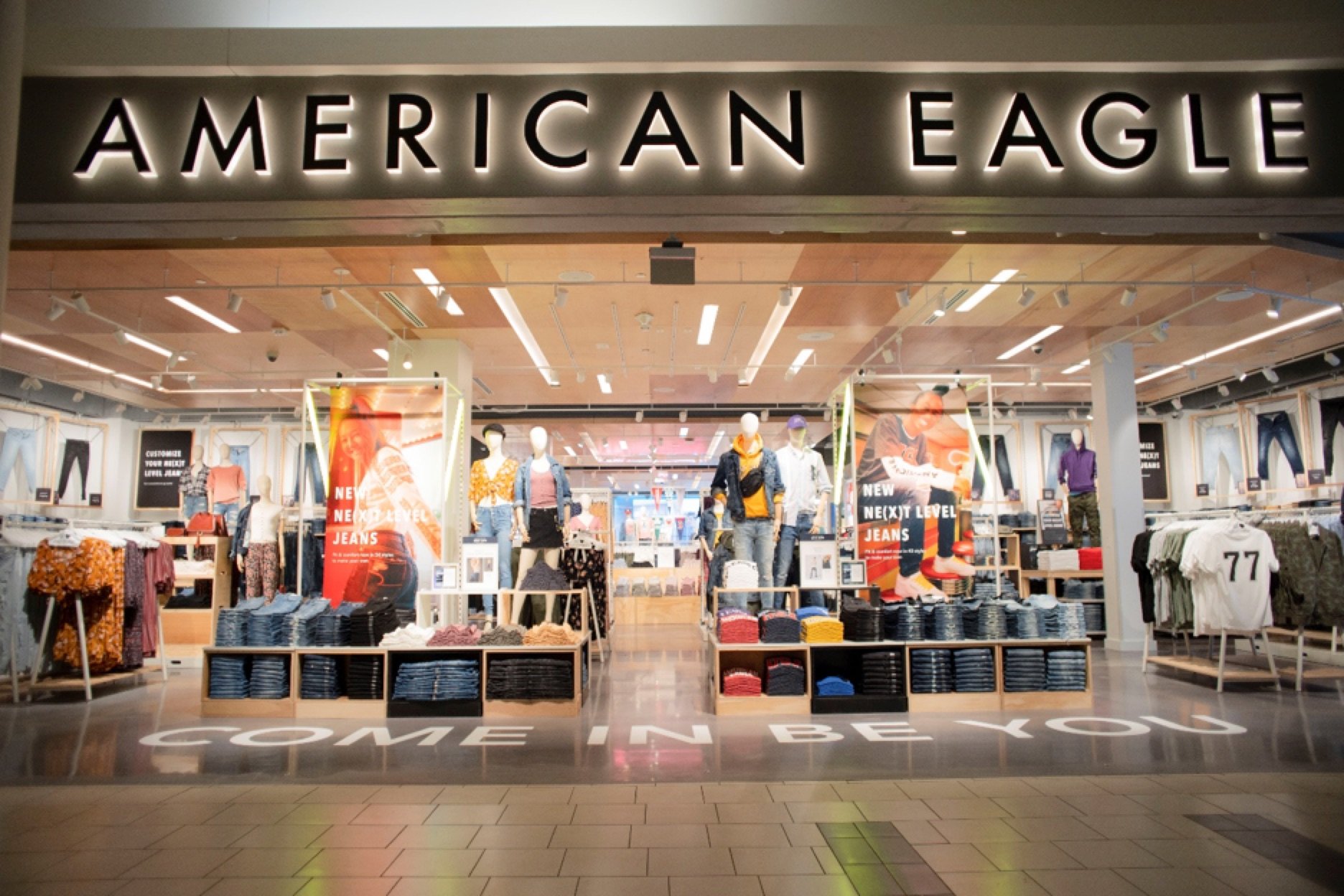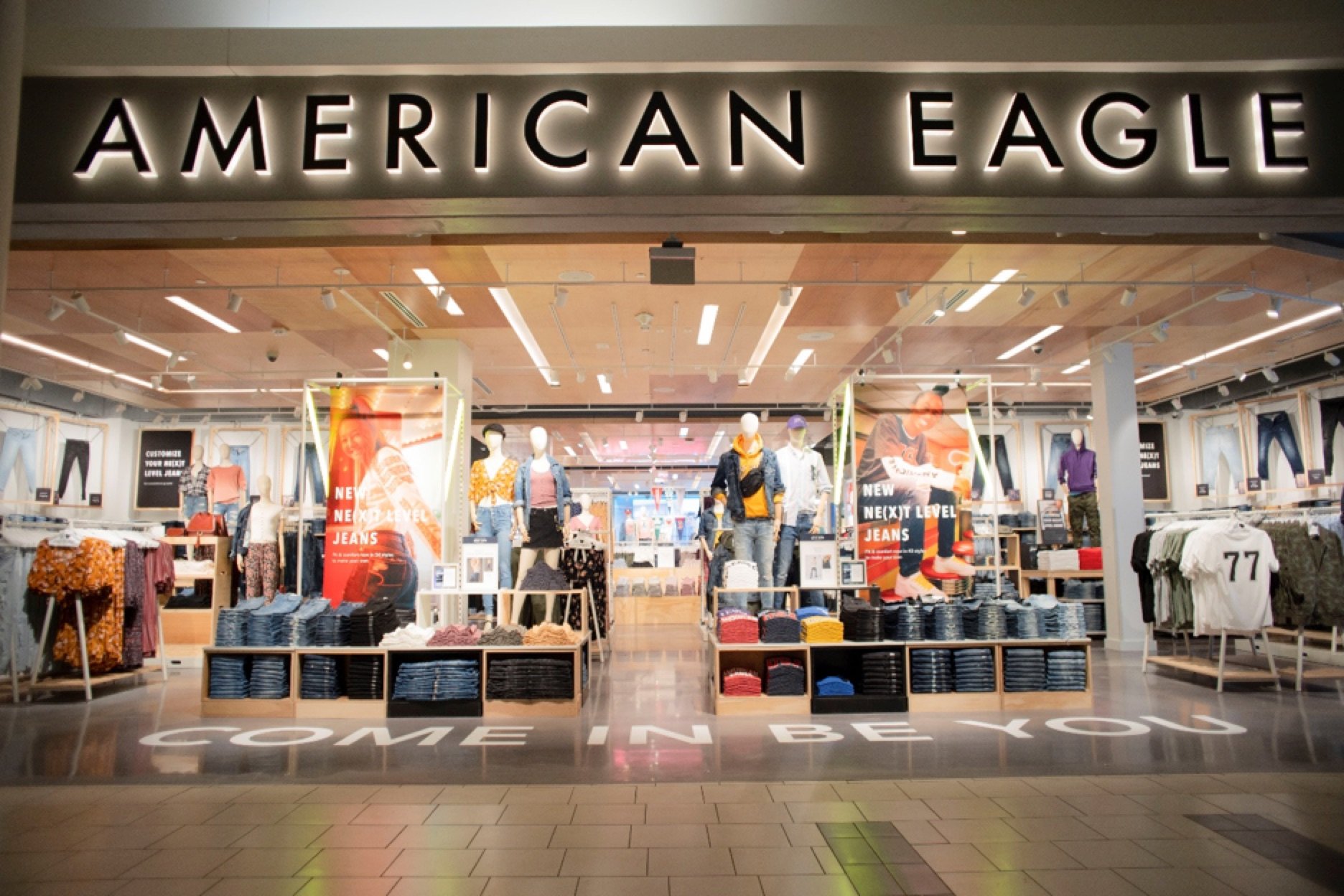In its press release regarding its ad campaign, American Eagle (AEO +1.56%) brand Aerie's chief marketing officer said, "The purpose of 'aerie Real' is to communicate there is no need to retouch beauty, and to give young women of all shapes and sizes the chance to discover amazing styles that work best for them." Aerie's new "Real" ad campaign features photos of models that haven't been touched up. This is apparently a new focus for Aerie, as last year's models seem to have been airbrushed quite a bit.
Luckily, we can all turn over new leaves. The real question is -- does it matter?
Teen retailers and body image
Teen retailers are in the business of selling trends and images. The hottest brands want to be connected with the most popular and attractive customers that they can. Sometimes, that leads to brands going too far, like Abercrombie & Fitch did last year, when a 2006 interview with CEO Michael Jefferies came to light. In the interview, Jefferies said, " A lot of people don't belong [in our clothes], and they can't belong."
What retailers are trying to do is be more inclusive then that, without being the thing that everyone takes for granted. Aerie's campaign is attempting to modify the system, making clothing popular because it's clever, not because it's the thing that only skinny people wear.
What difference could it make for American Eagle?
If the message can catch on, it would be good news for Aerie, which has suffered mightily at the hands of teen shoppers. Aerie's comparable sales -- sales from stores that had been open for at least a year -- were down for the first nine months of 2013 compared to the first nine months of 2012. That means that each store was seeing lower sales, on average, and it reflects weakness in the brand.
That's led the company to lower total revenue, with declines across the entire brand catalog. The only bright point came from AEO Direct, but the increase in the direct-channel sales couldn't save the big picture.
As evidence of what a difference rebranding can make, just take a look at Gap (GPS 1.50%). The teen retailer watched revenue fall as it became known as a brand with cheaply produced products and antiquated fashion sense. Then, in 2012, things started to take a turn. Gap cleaned up its image, largely through a marketing focus on its classic denim line.
The company's rebranding campaign, dubbed "Be Bright," had run for 12 months by the time the company reported its 2012 fiscal year results. Gap's turnaround was complete, as comparable sales rose 5% over fiscal 2011 and earnings per share rose around 10%. On top of that, the business used its rebranding to launch into a strong 2013, and through the third quarter, earnings per share were up 29%. American Eagle needs that kind of boost.
What difference does it make for society?
Studies have shown that there is a link between teen girls feeling bad about their bodies and their seeing unrealistic images of beauty portrayed in advertising. Aerie's campaign is just the most recent in a torrent of backlashes against touched-up photographs used in advertising and media. The first major brand to make a move against overedited photos was Dove soap, which launched its "Real Beauty" campaign in 2004.
Dove's work has helped it keep itself in the top 10 most valuable cosmetic brands, as ranked by Brand Finance. That's the sort of success that Aerie would love to have. But it still doesn't address the bigger question: Does it matter?
The bottom line
Let's be clear: None of these marketing campaigns are done out of some sense of charity. None of them are going to free the world from body image issues. That's not the point, though. The point is that it's a step in the right direction, and that if even one person feels better about themselves, the ads may have done the world a service.
All of that is good, but none of it is likely to make Aerie some great turnaround brand story. The company still sells imported, $30 push-up bras to teenagers . It's chasing a teen market that wants the newest thing and it gives them that product without question. The untouched photos are part of a bigger campaign, but the company still relies on incredibly skinny models for most of its online images. This is a step, but it's a single step on a long road for Aerie and for the population as a whole.
The other extreme may be the answer
Apart from everything above, there are Big Brother ways to address advertising issues. Some countries, like Norway, have put restrictions on advertising's ability to focus on the body. Over the years, a series of back-and-forths with Swedish-based apparel giant H&M has given the country a very clear view on what is and isn't allowed in advertising.
As an example, a billboard advertisement for H&M lingerie was allowed to pass because the photos focused on the clothing, with the models simply acting as a holder for the product. A similarly dressed woman in a bikini, however, was deemed unacceptable, as the woman as a sexual object was deemed to be too much of the advertisement's focus.
The results aren't perfect, but they're better than many others have achieved. In America, a study run by the National Institute on Media and the Family has shown that by age 17, 78% of girls report being unhappy with their bodies . In Norway, only 43% of 16-year-olds have similar issues. That's not the end of the problem, but it sure looks better than the current system.






